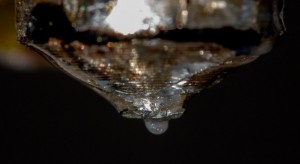3D printing for environmental research
For Manchester Science Festival I have been demonstrating an exploration of using 3D printing (additive manufacturing) to support environmental and ecology research and teaching. Apart from the practical benefits I think 3D printing is an important development for open research because it allows us to share hardware more easily than ever before, simply by sharing files just like we are already used to sharing data and results. My main area of research is soil microbial ecology but I am also working with others to apply 3D printing in macroscopic ecology projects such as animal monitoring and insect behaviour.
I contributed to two events during Manchester Science Festival as detailed below. These were an event exploring 3D printing for the future hosted by MMU (my employer), and a longer term exhibition at the Museum of Science and Industry which runs until April 2015.
Notes provided for MMU 3D printing event brochure
I am a microbial ecologist investigating the roles of complex microbial communities in soil. One aspect of this includes working out how microbes affect the absorption and emission of carbon dioxide from soils, which is relevant to both soil fertility and the global climate system. High throughput analytical techniques such as DNA sequencing have recently revolutionised the quality and quantity of information we can obtain about microbial communities, but functional understanding of those communities remains limited. Functional studies are often reliant on labour intensive experimental work which is constrained in terms of replication and the number of factors that can be studied. To overcome this I am working on building automated experimental systems for microbial ecology.
The 3D printer helps me try out new ideas, and radically expands the practical range of design options. An important part of scientific research is the dissemination of findings, allowing others to build upon your work. To this end I strive to use open-source tools including the printer itself in this case. The free open-source design printers such as RepRap require a certain amount of perseverance to get good results. To help with this I sourced our printer from local specialist Keith Bradburne who is constantly developing the technology, and provides technical support enabling me to focus on the research and not the printer.
The face of research is changing largely in response to digital technologies and especially the internet, which are facilitating sharing of data and results on an unprecedented scale. Some are calling this Science 2.0 although I prefer the term “open science”. By enabling digital sharing of research hardware, 3D printing is a revolutionary development which will accelerate scientific progress.
Notes provided for MOSI 3D printing exhibition
1. Pinch valve work in progress
This is to be part of a larger assembly for environmental research on the carbon dioxide emission of soils. The cam will be turned by a servo motor, causing pinching of the tubes to control air flow. Many other applications are possible with this device which can be manufactured very cheaply using a 3D printer. This object was designed using open-source tools and the design is freely available via [GitHub]. A locally manufactured open-source printer (reprap based) was used to print the objects.
2. Interlocking parametric grid
Several objects are shown based on the same design but with different key dimensions. These grids and racks are customised for holding laboratory equipment such as petri dishes and sample bottles, but the design parameters can be altered to make holders for different objects. The interlocking design enables production of objects larger than the printer bed. Parameters for height, cell-size, cell-number, and floor thickness were varied to produce the exhibited objects. Notice that other dimensions like wall thickness and connector size remain constant. The requirement for wall reinforcements is automatically determined based upon the floor thickness. These objects were designed using open-source tools and the design is freely available via [GitHub and Thingiverse]. A locally manufactured open-source printer (reprap based) was used to print the objects.

